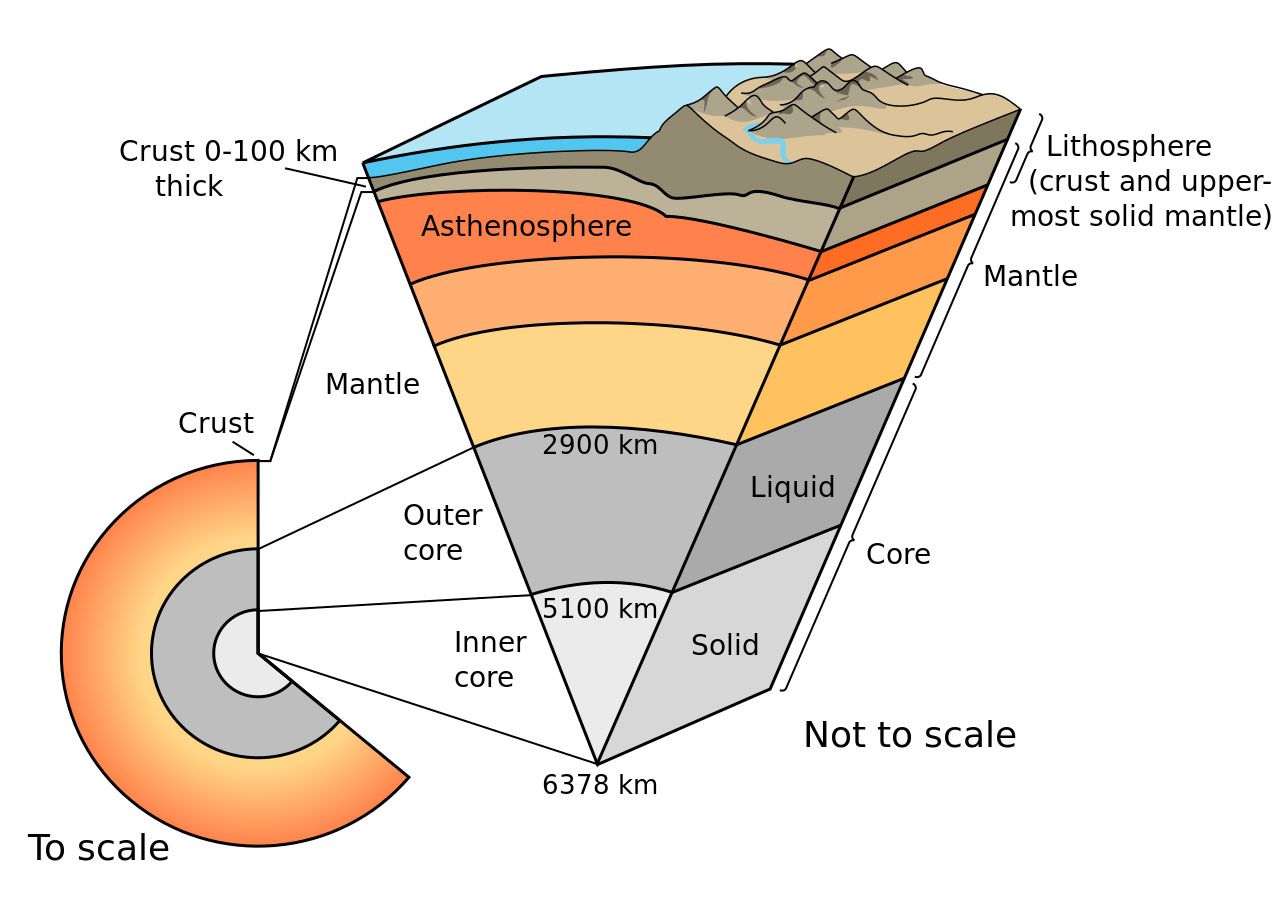What Best Describes the Location of the Mantle
The mantle is about 2900 kilometers 1802 miles thick and makes up a whopping 84 of Earths total volume. Between the crust and the lithosphere C.

Lithosphere National Geographic Society
If anyone could check my work on these science questions thatd be great thank you.

. Acrust Brigid mantle Cstiffer mantle Dasthenosphere 10The convection currents responsible. D the mantle has properties of both liquids and solids. The thin and solid outermost layer.
Which best describes the next step in the formation of metamorphic rocks. It is composed mostly of silicate rocks rich in magnesium and iron. The mantle is about 2900 kilometers 1802 miles thick and makes up a whopping 84 of Earths total volume.
Which statement BEST describes the relationship between Earths mantle and core. Its hot but solid rock. This is the first step in the formation of metamorphic rocks.
The mantle lies between Earths dense super-heated core and its thin outer layer the crust. The mantle lies between Earths dense super-heated core and its thin outer layer the crust. B the mantle has properties of solids only.
Which statement best describes the igneous crustal bedrock below locations A B C and D. Base your answers to the following questionss on the Earth Science Reference Tables and the map below. The Earths mantle is a roughly 1800 mile 2900 km thick shell of compressed and heated rock beginning below the Earths crust lithosphere which extends 31 miles 5 km below the ocean floor and 19 to 31 miles 30 to 50 km below the continents.
Asked Jan 4 2020 in Environmental Atmospheric Sciences by Tommy A. Heat is carried downward with the subducting plate. Mantle Summarize the formation of the Atlantic Ocean by putting the following into correct order with the first stage on the left.
Which statement is correct about the movement of plates that sit on top of the mantle. Preview this quiz on Quizizz. Above the crust B.
Between the crust and the core D. The rock cycle B. North America South America Europe and Africa were all part of the same supercontinent.
They were formed at the same location but one was moved. What describes the circular motion of heat below the earths surface. The mantle is the mostly-solid bulk of Earths interior.
Earth has three main compositional layers one of which is the mantle. Which statement describes metamorphic rock formation. What is the underlying force that drives plate tectonics.
Which statement BEST describes the relationship between Earths mantle and core. Which of the following best describes the location of the mantle. They regularly move because of the convection currents of magma.
I would call this convection currents in the mantle. Which of the following best describes the mantle A the mantle has properties of liquids only. Amid-ocean ridges and rift valleys Bwide valleys and deltas Cocean trenches and subduction zones Dhot spots and island arcs 9Which two features are commonly found at divergent plate boundaries.
The innermost layer of iron and nickel. Which answer describes the mantle. Rocks that were buried are.
Asheet of steel 15 mm thick has nitrogen atmospheres on both sides at 1200oc and is permitted to achieve a steady-state diffusion condition. The diffusion coefficient for nitrogen in steel at this temperature is 6 x 10- 11 m2 s and the diffusion flux is found to be 12 x 10-7 kgm2 -s. Which of the following best describes melting of the mantle at subduction zones that leads to island arc volcanoes.
Intense heat causes the rocks to rise. The mantle lies just below the core. Up to 24 cash back Which location is positioned over a mantle hot spot.
Formation of Earth Study Guide. Lava melts underlying rocks which crystallize into new minerals. The mantle is the mostly-solid bulk of Earths interior.
The liquid layer that encloses a solid ball of iron and nickel. C the mantle has the properties of gases and liquids only. Existing rocks are buried and forced toward the mantle increasing heat and pressure.
Which statement BEST describes the relationship between Earths mantle and core. Buried rocks melt deep within the mantle. Material in the core and mantle combines to.
Beneath the core 6. The hot layer of rock between the crust and the core. The map shows seismograph recording stations at location A B and C land.
The core is denser than the mantle. What best describes the mantle. The mantle under the crust is about 1800 miles deep 2890 km.
Location D ocean is an earthquake epicenter. It makes up 70 of Earths volume in comparison to the Earths crust which makes up less. The mantle and core are made up of hard solid rock.
Play this game to review Earth Sciences. Also it is known that the concentration of nitrogen in the steel at the high.

The Layers Of The Earth C Copyright 2006 M J Krech All Rights Reserved Outer Core Earth Convection Currents

3 1 Earth S Layers Crust Mantle And Core Physical Geology First University Of Saskatchewan Edition

Earth Nomenclature Book Earth Layers Montessori Lessons Parts Of The Earth
No comments for "What Best Describes the Location of the Mantle"
Post a Comment